Animals - One of the primary rules of healthy living is to do no harm.
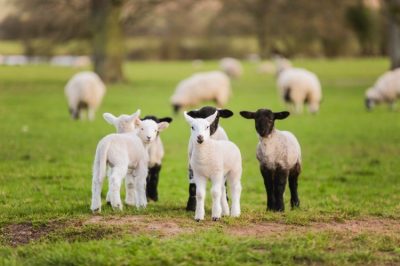
One of the primary rules of healthy living is to do no harm.
Scientists are uncertain how many animals inhabit planet Earth. According to a recent study in the journal PLoS Biology, there are 8.7 million species of animal life on our planet—and every year, new species are discovered. Each and every creature is an integral part of the tapestry of life.
When one creature disappears the fabric of the biosphere begins to unravel. The great unravelling that is underway now is completely caused by humankind. We tend to view the world we live in—and often all other life, except domestic animals—as the “other.”
Our belief in human supremacy (often referred to as anthropocentric thinking) allows us to place ourselves at the centre of the universe. We view our uniqueness as a sign of separation from the rest of life that swirls around us and within us, what a sad mistake.
We raise and kill billions of animals each year. These non-human beings are raised to never fulfil their life to enjoy the company of their kind, to breed naturally and raise their young. All are killed when they are in their adolescent stage of growth and have finished their initial growth spurt. They are never given the chance to experience their full life. We have despoiled the land, the air, and the waters of the world in our quest to raise food for the animals we eat. And we damage our own health in the process.
This extinction of land life is matched in the world’s oceans. Oceans are being emptied of native fish at an alarming rate to satisfy our appetites. Commercial fishing operations needlessly kill sea creatures that are not viable in the market or are too small and waste them. At the present kill rate, the seas will be virtually empty by 2050.
The Human Ecology Project Newsletter will keep you up to date with how to live a healthy life while respecting the right to life for the animals we share the world with.
Environment - does not exist “outside”, it is around us and within us.
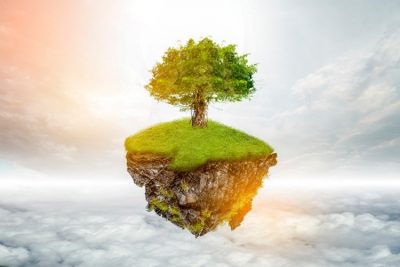
The environment does not exist “outside”, it is around us and within us
What is known is that the world, as we have known it, is disintegrating before our eyes. We are not speaking about societies; they come and go. We are referring to the actual world, what we usually refer to as the environment – nature.
When nature goes it doesn’t come back. Damage can sometimes be reversed but the extinction of a plant, an insect, a fish, a mammal, or a bird is a final act. It is gone forever. With it goes the function that it served, a thread in the vast tapestry of life.
Who would do such a monstrously stupid thing? Who indeed? Many people now realize that the existential threat of our actions is rebounding on us. As ice melts, oceans rise, insects disappear, and climate driven fires burn down the forests we consider action but what kind of action.
The most significant actions involve our personal choices. Paramount among these is the food we eat. Raising animals, growing food for animal production, and the transportation, refrigeration and processing of animal sourced foods are the major cause of environmental damage to the air, water, soil, and seas of the world. We eat every day and our choices can reflect our commitment to a sustainable and healthy world. We can model the future.
We can still reduce, recycle and reuse. We can still vote for those who speak the truth and take action, force industry to clean up their act - all good things. There are many good things we can do but not if we think that the solution is getting other people to fix the problem. Personal commitment and action in our patterns of consumption is the crucial key. We cannot allow ourselves to become victims of a cruel world. The personal is planetary.
Every month, the Human Ecology Project Newsletter will keep you up to date with positive actions you can take to create a healthy environment for all human and non-human life.
Health - Creating good health is not an accident, it is a creation

Creating good health is not an accident, it is a creation.
The Human Ecology Project respects the fact that health is a dominant factor in our life. Health can allow us to fully express our potential, enjoy the simple pleasures of life and make us more resilient to physical and emotional stress.
Increased scientific knowledge and the traditional wisdom of many cultures shows us that the key to good health starts in the gut. Our intestinal tract contains the internal environment of the gut biome. It is here where the nutritional components of the external environment go through the processes of digestion and absorption.
This is process is governed by the 100 trillion micro-organisms who call the gut home. It is in this internal environment where the most intimate contact between us and the outer world take place. We control this community of cells through our daily food. Every time we eat, we are feeding the microbes within us and even deciding which ones survive.
What we eat has a profound influence of our susceptibility to diseases, particularly the non-communitive diseases such as heart disease, diabetes, stroke, many cancers, and inflammatory diseases. These are the diseases that are most deadly and the leading causes of death.
According to Dr. Stephen Kopencky of the Mayo Clinic, "Nutrition is now the No. 1 cause of early death, and early disease in our country and the world.” He goes on to say that having genes for disease will increase your risk by 30% to 40%, but having a bad lifestyle for disease will increase your risk by 300% to 400%.
In coming issues of this newsletter, we will be sharing information on how to get the most nutrition from our food choices, how to create a healthy gut environment and contributing to a healthy world for humans and non-humans alike.
Quinoa Recipes
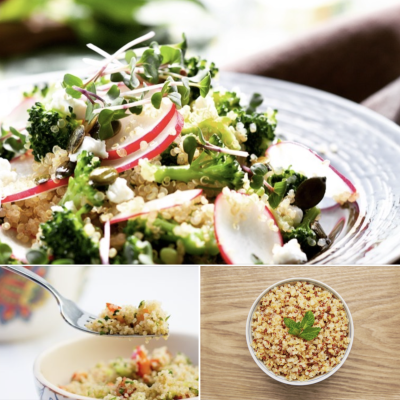
I have seen many athletes for health counselling and trained their chefs to cook delicious plant-based vegan meals. Once they understand the importance of carbohydrates (complex carbohydrates) they are hooked. Using grains, beans, vegetables from land and sea, fruits, nuts and seeds to create delicious, nutritious oil-free meals, they tell me they are in better health with faster competing times for marathon running and cycling AND with quicker recovery time than before they connected with Bill and I.
The power of plants in a vegan well balanced diet is immense. Win for humans, win for the animals and win for the planet. Here are two of my client's favourite quinoa dishes.
Quinoa with Broccoli, Salad Greens & Radishes
1 cup quinoa (rinsed)
1 1/3 cups water
Small head of broccoli florets
Fresh salad greens such as rocket, watercress
1 small bunch of red radishes, very thinly sliced
Steam the broccoli florets until tender, set aside to cool. Bring the quinoa and water to a boil in a pan, cover and simmer on a very low heat 15 minutes until the water is absorbed. Remove from the heat and leave covered for 15 minutes. Transfer to a large bowl and fluff up with a fork, allow to cool. Add the broccoli florets, fresh salad greens and radishes to the quinoa bowl and pour over some of the dressing. Stir and serve.
Marlene’s Italian Vinaigrette
1 tbsp nutritional yeast
1 tsp Dijon mustard
1 ½ tsp Italian seasoning
1 tsp garlic granules
1/4 tsp celery seeds
2 tbsp tahini
2 tbsp umeboshi plum vinegar
1/4 cup water
2 tbsp brown rice syrup
1 tbsp fresh lemon juice
1 tbsp tamari
Combine all the ingredients in a blender and puree until smooth. Add more water to reach desired consistency. Taste and add adjust to your desire. Serve over salad leaves or vegetables. Store in a glass jar in the refrigerator for up to a week.
Mediterranean Quinoa
1 cup yellow quinoa or ½ cup yellow and ½ cup red
1 1/3 cups vegetable stock or water
1 or 2 garlic cloves, crushed
1 red onion finely diced
1 orange pepper, diced
2 spring onions finely diced
¼ cup toasted pumpkin seeds
Juice squeezed from ½ lime
Toast quinoa in a heavy based pan over a medium flame for about 5 minutes until it crackles and becomes aromatic. Transfer to a sieve and rinse under cold water to remove the saponin outer coating which can be bitter tasting. Heat a splash or two of water in a large saucepan over medium heat and add the garlic and onion and cook, stirring often, until softened, 2 to 3 minutes. Add the orange pepper, quinoa and stock and bring to a simmer. Cover and cook until the quinoa is tender and most of the liquid has been absorbed, 20 to 25 minutes. Add the toasted pumpkin seeds, diced spring onions, lime juice and fluff gently with a fork. Serve with a crisp green salad.
In good health

The REAL Truth About Carbs Workbook
This is a Human Ecology Project Workbook The REAL Truth About Carbs
We hope you can find a group of friends and watch the video together to discuss the issues presented in it. We have supplied some questions to get the ball rolling if you need them, and supplied a full text of the video with references to some studies and articles if you want to carry your studies deeper.
According to a Cambridge University research review, “Epidemiological studies find that whole-grain intake is protective against cancer, CVD, diabetes, and obesity”. They went on to say that whole grains have high concentrations of dietary fibre, resistant starch, antioxidants, and other compounds linked to disease prevention.
It is easy to see that the mythologies regarding weight gain and carbohydrate consumption are related to the overconsumption of refined products. One needs to look no further than the cultures that rely on cereal grains as their main food to see the absurdity of the weight gain claim. For centuries the human diet has relied heavily on complex carbohydrate foods such as grains, beans, root vegetables, tubers, seeds, and fruits as principal foods. Our bodies are even especially constructed to eat them.
Remember: The Personal Is Planetary.
Watch the Video
The REAL Truth About Carbs
In good health

Sweet Cherry Ice Cream with Chocolate Sauce

2 cups banana, sliced
2 cups frozen sweet cherries
2 tbs plant-based milk
¼ tsp. vanilla extract
Peel and slice the banana and freeze in a freezer bag overnight. Remove from the bag and allow the banana to sit on the counter top for a few minutes before processing. Place all the ingredients in a food processor or high-speed blender. Process until thick and creamy.
Note: If using a blender start slowly then increase the speed using the tamper to push down the frozen fruit. Increase the speed to high, continue to use the tamper by pushing the ingredients down to the blade. Blend until you reach a thick and creamy texture. You can add other berries and frozen fruits for wonderful colour and a different taste. Serve immediately with some fresh fruit and/or with the chocolate sauce.
Quick Chocolate Sauce
¼ cup rice syrup
3 tbsp. cacao powder
½ tsp. vanilla extract or powder
In a small bowl, mix all the ingredients together. Pour into a squeezy bottle and use as a decorative treat for ice cream or other desserts. Keep refrigerated.
Rich & Creamy Asparagus Soup

Asparagus, or garden asparagus, folk name sparrow grass, scientific name Asparagus officinalis, is a perennial flowering plant species in the genus Asparagus. Its young shoots are used as a spring vegetable. It was once classified in the lily family, like the related Allium species, onions and garlic. Delicious as a soup, steamed, roasted or sautéed and one of our favourite spring/summer vegetables.
1 cup cashews, soaked overnight
1 large onion, diced
3 cloves garlic, minced
2 large bunches about 2lb. asparagus,
1 umami instant stock sachet
2 cups warm water
½ tsp each thyme, basil and marjoram
1 tbsp tamari
2 large handfuls spinach
3 tbsp nutritional yeast
1 tbsp lemon juice
Garnish
Sliced lemon
Thinly cut greens from spring onion, cut on the bias
Trim the woody ends off the asparagus and discard. Cut the asparagus into one-inch pieces. Discard the soaking water from the cashews and set aside. In a small jug, mix the umami stock in the warm water. In a heavy based pot warm a splash or two of water over a medium heat. Add the diced onion and garlic and cook for 5 minutes on low/med heat. Add the asparagus, pieces, and the umami instant stock with the dried herbs and tamari. Bring to a boil, reduce to a simmer, cover, and cook until asparagus is very tender, 10 to 15 minutes. Transfer to a high-speed blender add the cashews, nutritional yeast, and lemon juice, blend until smooth. You can add more spinach to achieve desired colour. Return to the pot and warm over low heat. Garnish with a little oat cream or soy cream if desired.
The Vision & Way Forward Workbook
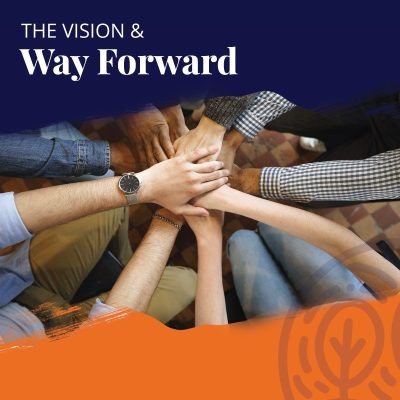
This is a Human Ecology Project Workbook Vision & Way Forward.
In 2008 Bill and I conceived of a project to educate as many people as possible about ways to create a sustainable future. We called it The Human Ecology Project. Growing out of our belief that food choices are one of the most powerful ways that individuals can contribute to a healthy planet, we started working to integrate our experience and insights into a comprehensive approach to nutrition one that speaks to the problems of the present and contains the wisdom of the past.
Unfortunately the problems that existed then are still in place and even worse than before. There continues to be confusion about what we should be eating and how those decisions affect the world at large. The Human Ecology Project exists to help clarify those issues. So, let’s start at the beginning.
We hope you can find a group of friends and watch the video together and discuss the issues presented in it.
We have supplied some questions in the workbook to get the ball rolling if you need them, and supplied a full text of the video with references to some studies and articles if you want to carry your studies deeper.
Remember: The Personal Is Planetary.
In good health

Food For Our Future Workbook

This is a Human Ecology Project, Food For Our Future Workbook
We hope you can find a group of friends, watch the video together and discuss the issues presented in it.
We have supplied some questions in the workbook to get the ball rolling if you need them, and supplied a full text of the video with references to some studies and articles if you want to carry your studies deeper.
We believe that soil quality, use and preservation is a fundamental issue in creating a sustainable environment. How we treat the soil is a direct reflection of the choices we make when we buy food for ourselves and our families.
Remember: The Personal Is Planetary.
In good health

Community Outreach
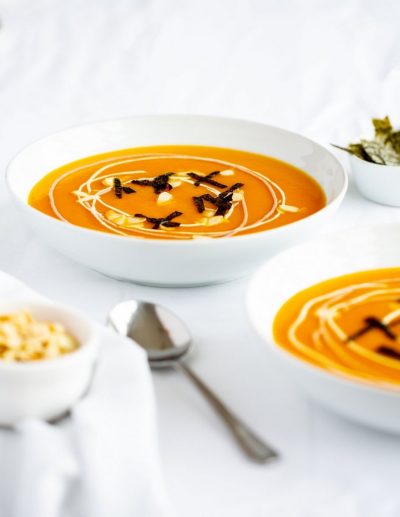
Our Mission
The mission of the Human Ecology Project is to stimulate public awareness and action toward the creation of a healthy world for both human and non-human life. We believe that personal daily actions can produce profound improvements in nutrition, environmental stability, social justice, and animal rights.
Statement of Purpose
To achieve our mission, we produce short educational videos and other digital content for distribution through health, environmental and animal rights groups as well as generating curriculum packets for use in both private and public schools.
Download our free Human Ecology Project Soups Cooklet and share with family, friends and colleagues. Cook together, have fun and enjoy the delicious and easy to prepare nutritious bowls of goodness.
In good health


